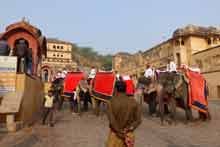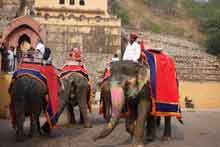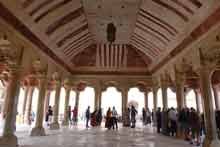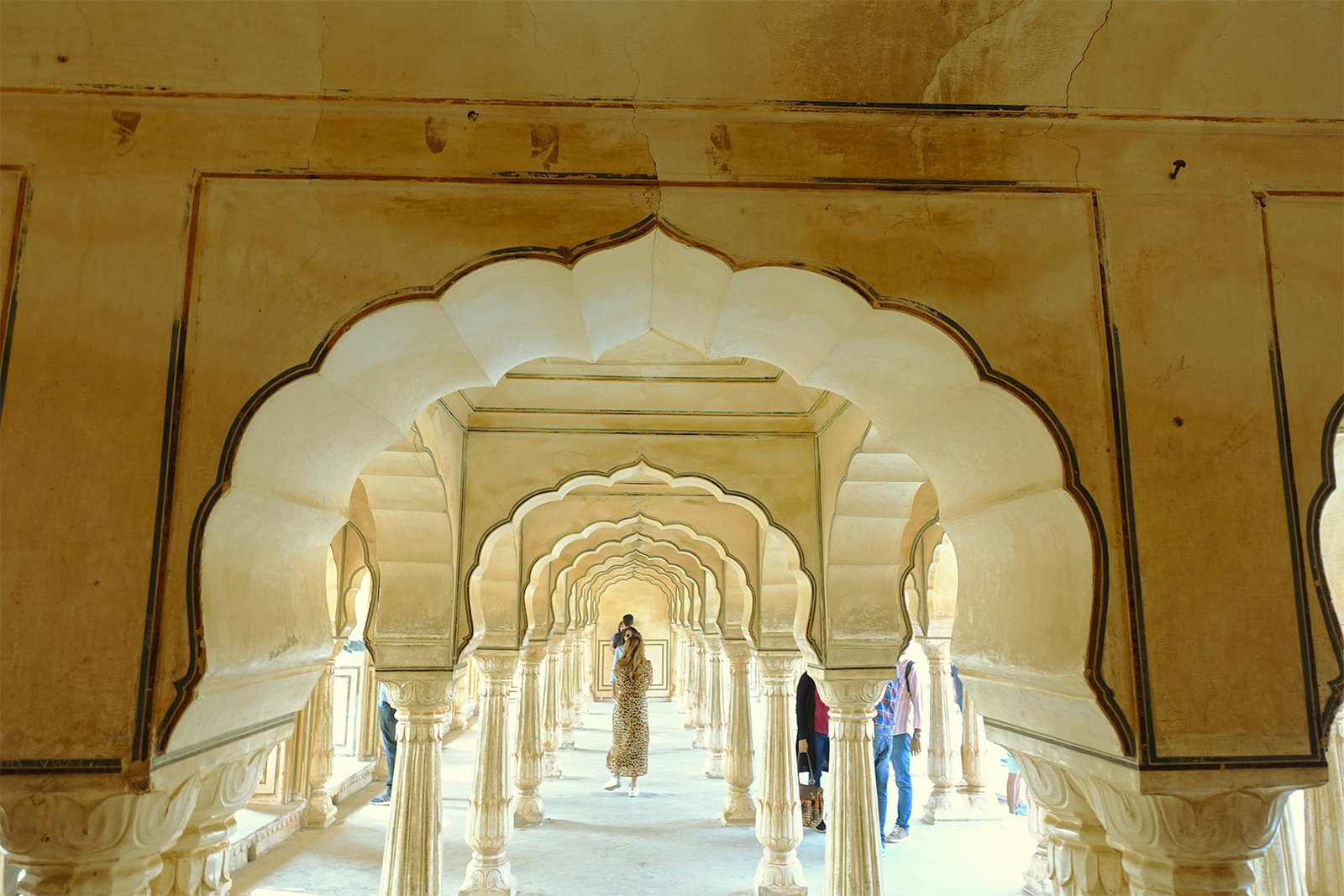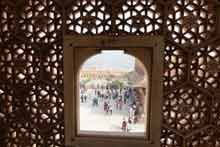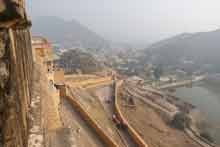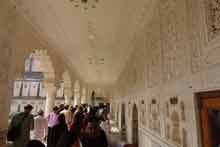Amber Fort, also known as Amer Fort, stands as a magnificent testament to Rajasthan's regal heritage, boasting a history of valor, opulence, and architectural brilliance. Amer fort adorned with intricate carvings, stunning mirror work, and grand courtyards that offer a glimpse into the opulent lifestyle of the Kachwaha Rajput rulers. Its historical significance and ornate beauty make it a must-visit destination, where visitors can immerse themselves in the rich tapestry of Rajasthan's regal past. Perched atop a hill in Jaipur, India, this majestic fortress holds both historical and aesthetic significance.
History:
Built in the 16th century by Raja Man Singh I, a trusted general of Emperor Akbar, Amer Fort served as the seat of power for the Kachwaha Rajput dynasty. Over the centuries, successive rulers made additions and enhancements, contributing to its grandeur. The fort's strategic location provided protection against invasions and offered panoramic views of the surrounding landscape.
Architecture:
Amer Fort's architecture is an enchanting blend of Rajput and Mughal styles, characterized by intricate details, artistic flourishes, and defensive features. The fort's imposing walls and gates lead to a series of stunning courtyards, palaces, gardens, and pavilions. Notable features include:
- Ganesh Pol: The Ganesh Pol (Gate) in Amer Fort holds significant cultural and symbolic importance. It is the main entrance to the fort and serves as a representation of the Hindu deity Lord Ganesh, who is revered as the remover of obstacles and the god of beginnings. The Ganesh Pol is adorned with intricate frescoes, detailed carvings, and vibrant colors, showcasing the artistic finesse of the era. As visitors pass through this ornate gate, it is believed that they are seeking Lord Ganesh's blessings and protection, ensuring a successful and obstacle-free journey ahead.
- Diwan-i-Aam: The Hall of Public Audience is an open pavilion where the ruler would meet his subjects, showcasing delicate marble lattice work and ornate pillars.
- Sheesh Mahal: The Palace of Mirrors is a breathtaking chamber entirely covered in intricate mirror work, reflecting light and creating a magical ambiance. The Sheesh Mahal's brilliance extends beyond its visual appeal; it showcases the technical prowess of the craftsmen, the innovative architectural concepts of the time, and the luxurious lifestyle of the royals. Visiting this masterpiece allows one to step into an enchanting world where light, reflection, and artistry combine to create a truly magical experience.
- Sukh Niwas: The Hall of Pleasure is a cooling chamber with a system of water channels designed to moderate the temperature and provide comfort during hot Rajasthan summers.
- Jai Mandir: The Hall of Victory is a private chamber adorned with detailed mirror work, glass mosaics, and paintings, showcasing the artistic finesse of the era.
- Zenana: The royal apartments, including the Zenana courtyard and chambers, highlight the blend of aesthetics and privacy in Mughal architecture.
- The Sheesh Mahal (Palace of Mirrors) in Amer Fort is a marvel of architectural ingenuity and artistic craftsmanship. Its brilliance lies in several aspects:
- Mirror Work: The entire interior of the Sheesh Mahal is adorned with intricate mirror work, creating a mesmerizing effect as light reflects and shimmers off the surfaces. This craftsmanship was a result of meticulous planning and precise execution, showcasing the advanced skills of artisans of the time.
- Optical Illusions: The mirror work is strategically placed to create optical illusions, making the room appear much larger and filled with infinite reflections. This design technique demonstrates an advanced understanding of spatial aesthetics.
- Temperature Regulation: The mirror work also served a practical purpose. During the daytime, the mirrors would reflect and amplify natural light, illuminating the space. At night, candles and lamps would create a dazzling spectacle, enhancing the luxurious ambiance.
- Artistic Detailing: The mirror work is complemented by intricate frescoes, floral patterns, and paintings on the walls, ceilings, and arches. These artistic elements add depth and dimension to the space, enhancing its overall opulence.
- Royal Chamber: The Sheesh Mahal was likely used as a private chamber for the rulers, highlighting their privileged lifestyle. The reflective surfaces would create an aura of luxury and extravagance, befitting the regal occupants.
- Cultural Symbolism: The Sheesh Mahal is a testament to the fusion of Rajput and Mughal architectural styles. It reflects the cultural and artistic syncretism that characterized the Mughal era, where diverse influences merged seamlessly.
Amer Fort's architecture not only showcases the aesthetic tastes of its builders but also reflects their engineering prowess and understanding of climatic challenges. The intricate frescoes, delicate marble inlay, and detailed carvings portray the cultural richness and opulence of the time.
Visiting Amer Fort is not only a journey through history but also a visual feast of architectural magnificence, transporting visitors to an era of regal splendor and artistic brilliance.

